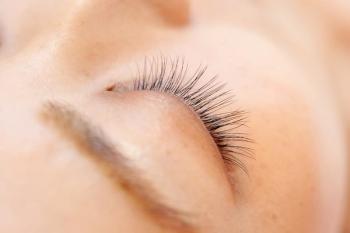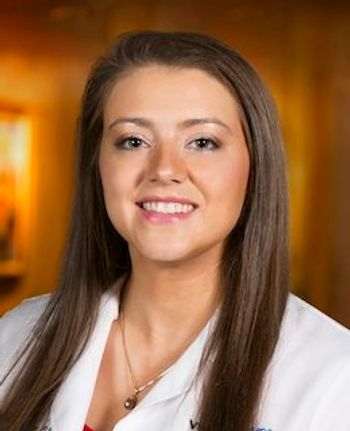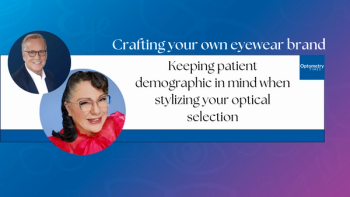
How to know when it’s not dry eye
Anaheim, CA-Dry eye may be a common diagnosis in the optometric world, but the condition isn’t always as it seems. Often, symptoms appearing as dry eye may in fact be caused by other conditions-and it can be difficult to distinguish which is which, says Paul Karpecki, OD, FAAO.
Diagnosing dry eye
Dry eye incidence is increasing, with nearly 30 percent more cases reported in 2006 than were reported in 1996, says Dr. Karpecki. Dry eye is a condition often caused by multiple factors, most frequently involving:
• Age, gender, environment
• Anterior segment disease, systemic health disease
• Medications
• Contact lens wear
• Environmental factors such water intake, allergies, or seasonal disturbances
This is part of the challenge of diagnosing dry eye-with so many confounding variables at work, it’s easy for optometrists to assume that a patient has dry eye when, in truth, she doesn’t.
According to Dr. Karpecki, the most common diagnostic tests for dry eye include:
• Patient history
• Slit lamp exam
• Fluorescein dye
• Schirmer’s test
While these are a good start, Dr. Karpecki says that optometrists shouldn’t rely on them alone.
“Frankly, the ability to make your diagnosis on those four probably isn’t more than 75 to 80 percent,” he says.
This means that ODs are potentially missing one in five cases of dry eye.
Related:
“Symptoms and signs do not correlate,” he says. “If you just went off symptoms, you could be wrong as much as 40 percent of the time.”
He describes a battery of tests that optometrists should use when attempting to diagnose legitimate cases of dry eye, including fluorescein dye, cover tests (traditionally used for optic misalignment), and expressing meibomian glands.
Through comprehensive analyses, providers can get more information that may help in more accurate diagnoses of dry eye. These analyses should also include examination of physical structures, including results of visual field tests and OCTs.
When dry eye isn’t dry eye
Dr. Karpecki says that osmolarity can be an important contributing test to determine dry eye in patients without symptoms, but osmolarity alone isn’t enough to make a diagnosis, he says.
“This is not a test to tell you that you have the disease; it’s a test to tell you the current homeostasis of your tears,” he says.
But diagnosing levels of osmolarity can give practitioners more information about a patient’s ocular health; a critical aspect of making a correct diagnosis.
However, osmolarity is also subject to other health conditions that may present with the same symptoms as dry eye-particularly allergic conjunctivitis.
Patients with normal osmolarity who had symptoms of dry eye may actually allergic have conjunctivitis, he says.
Related:
Other notable that can create symptoms similar to dry eye include:
• Pingueculitis
• Pterygium
• Infectious conjunctivitis
• Conjunctival concretions
• Conjuctivochalasis
Dr. Karpecki says that tests like osmolarity can help optometrists keep their eyes open when trying to make sense of this noise. With other conditions masquerading as dry eye, it’s important that optometrists not make assumptions when diagnosing.
“Having those tests made me more sensitive to looking for something else,” he says.
Allergies, in particular, are commonly mistaken for dry eye proper. Dr. Karpecki says that proper diagnoses require an overall examination of health factors.
“Look at more than just the eye,” he says.
He advises looking at systemic health factors to help make the determination.
“Even asthma is highly associated with allergy patients, not necessarily with dry eye,” he says.
Dr. Karpecki described that binocular vision problems can also mask dry eye symptoms by affecting the tissues in the eye. Convergence insufficiency can lead to overstimulation of the trigeminal nerve, causing headaches and other factors that may affect the cornea create dry eye symptoms.
Related:
Dry eye and binocular vision disorders
Recognizing dry eye symptoms in patients is only the first step.
Susan Cotter, OD, FAAO, says that sometimes the subjective symptoms don’t match the clinical signs. Look for connections between dry eye symptoms and binocular vision disorder.
“Symptom-wise, at least in the way patients present, the disorders are similar,” she says. “There’s a high prevalence of binocular vision disorder in those that are presenting with dry eye symptoms.”
These tests can help practitioners identify binocular vision conditions:
• Convergence Insufficiency Symptom Survey
• Refraction
• Cover tests
• Eye alignment and vergence assessments
• Near point of convergence tests
• Accommodative accuracy
These tests give optometrists comprehensive information on a patient’s possible convergence problems, phorias, or accommodative insufficiencies that may play a role in creating visual disturbances or abnormalities that can appear as dry eye.
Dr. Cotter believes these tests provide sufficient evidence for diagnosing binocular vision disorders.
But when it comes to treatment, Dr. Cotter says that options depend on what is found in the exam.
Choices for convergence insufficiency are vision therapy or prism. Prism is the more common treatment option in adults. Use Sheard’s criteria for prescribing.
Accommodative insufficiency and convergence excess correction options are vision therapy or a basic near add. Divergence insufficiency patients succeed with vision therapy, prism correction, or even muscle surgery, she says.
Understanding dry eye
Although dry eye is common, misdiagnosed dry eye that may be problematic for practitioners and patients alike.
Take a comprehensive view of a patient’s systemic health before making diagnoses because many variables may influence a possible diagnosis of dry eye.
Related:
Newsletter
Want more insights like this? Subscribe to Optometry Times and get clinical pearls and practice tips delivered straight to your inbox.


















































.png)


